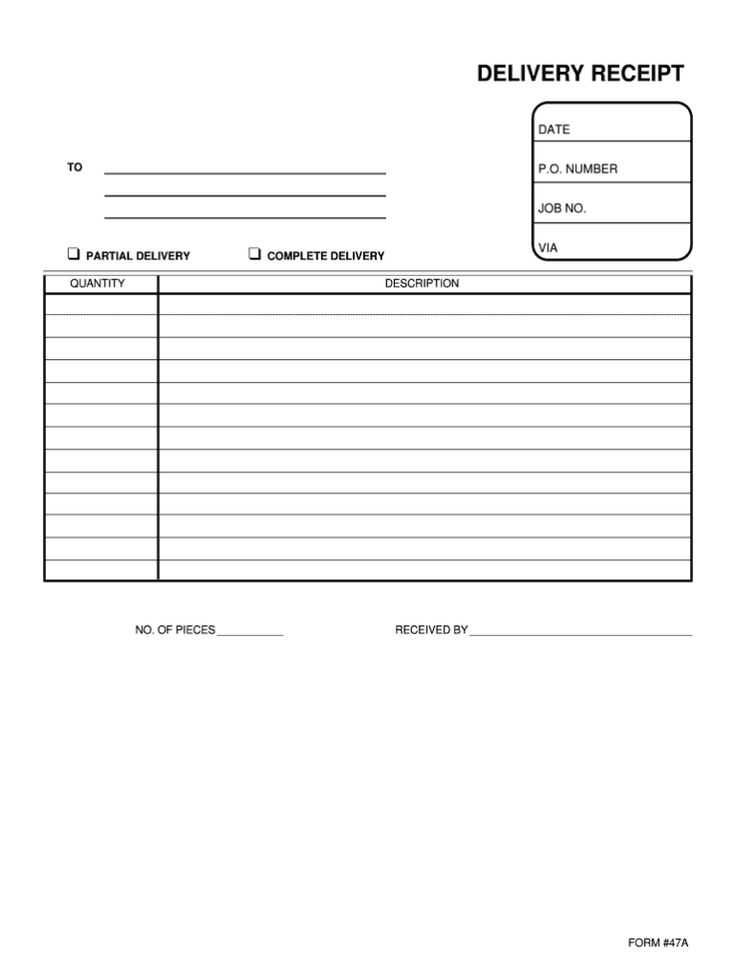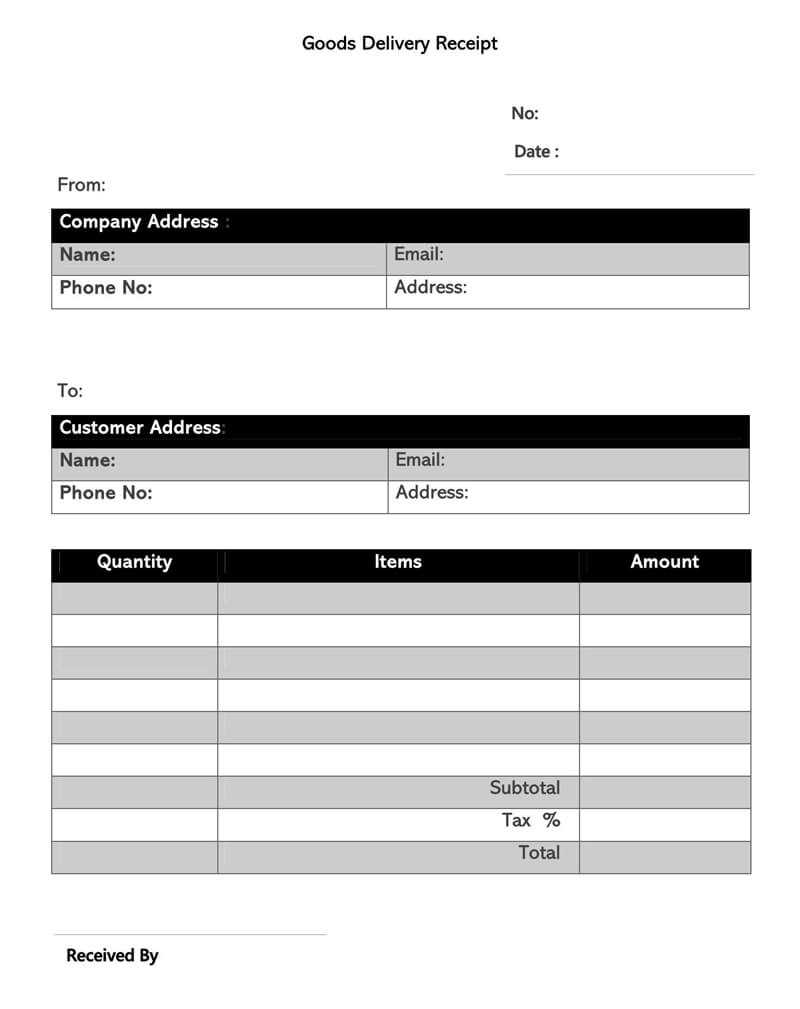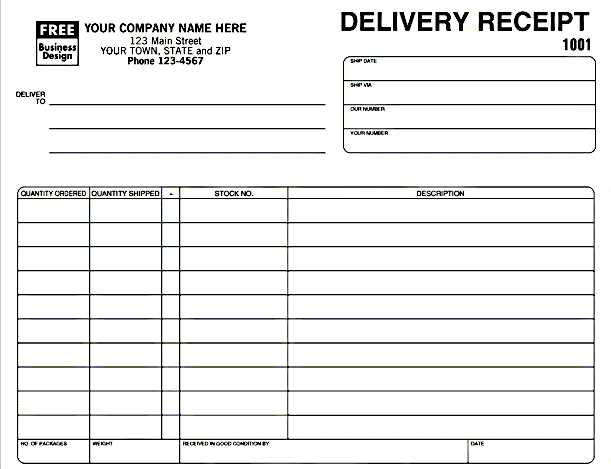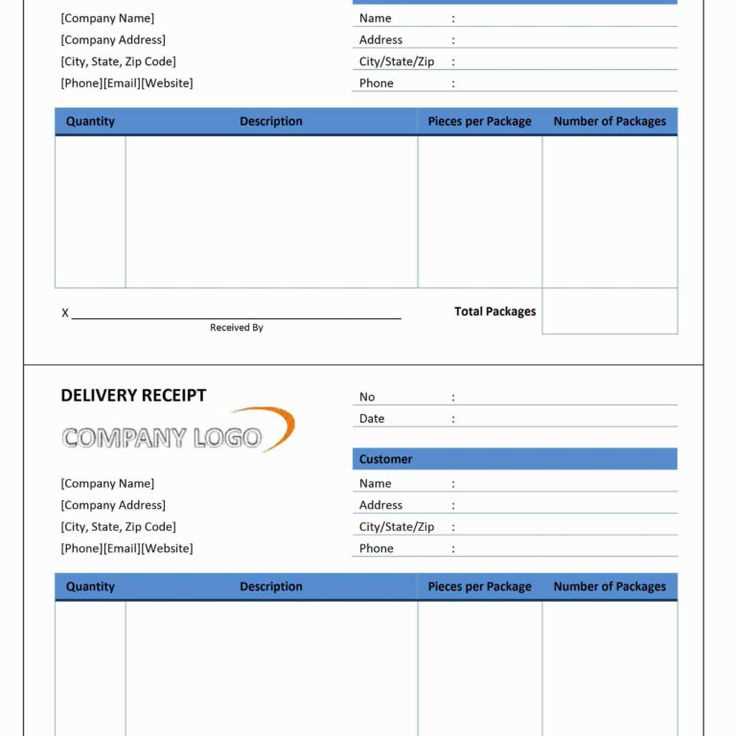
A clear and concise delivery receipt template is key to ensuring smooth transactions and effective communication between sellers and buyers. By using a well-structured document, both parties can confirm the completion of a delivery and any related terms.
To create a useful template, focus on key details such as the date of delivery, buyer and seller information, description of the items, and the condition of the goods. This ensures transparency and minimizes the chance of disputes. Include space for signatures to authenticate the delivery process and avoid future misunderstandings.
When drafting the template, make sure it is easy to fill out and includes all relevant legal or contractual terms that apply to the transaction. A good template should be customizable to fit various types of deliveries, ensuring versatility for different situations.
Make sure the template is accessible to both parties, whether through physical copies or digital formats. This will streamline the process, making it easier for both buyers and sellers to keep track of transactions.
Receipt of Delivery Template
For accurate record-keeping and confirmation, use a well-structured receipt of delivery template. This document should clearly outline the transaction details and provide both the sender and receiver with a clear understanding of what was delivered. A properly filled template can reduce confusion and protect both parties in case of disputes.
- Recipient’s Information: Include the full name, address, and contact information of the person or organization receiving the delivery.
- Sender’s Information: List the details of the sender, including their name, address, and contact information.
- Delivery Date: Specify the exact date and time the items were delivered. This helps in tracking and resolving any delivery issues.
- List of Items Delivered: Detail each item being delivered, including its description, quantity, and condition upon arrival.
- Delivery Method: Mention how the delivery was made (e.g., by courier, by hand, via postal service).
- Signature of Recipient: The recipient’s signature is essential to confirm receipt of the goods in the expected condition.
- Additional Notes: If applicable, add any relevant remarks, such as issues with the delivery or special instructions.
This template provides a straightforward structure for documenting deliveries. Ensure all details are accurate to avoid any future misunderstandings. It is a practical tool for both small businesses and larger enterprises to keep track of their goods and services effectively.
How to Structure a Delivery Receipt
Begin by clearly stating the date of delivery. This sets a clear record of when the goods were received. Right after that, include the recipient’s name and contact information to confirm who is accepting the delivery.
Details of Delivered Items

Provide a detailed list of items being delivered. For each item, specify its name, quantity, and description. This ensures both parties are aware of the exact contents of the delivery. If applicable, include serial numbers or other identifying information to avoid any confusion.
Delivery Confirmation
Conclude the receipt with a signature section where the recipient can confirm the delivery. A space for their signature and date ensures there is no dispute about the goods being received. Include a section for the delivering party to sign as well, confirming that the delivery was made as agreed.
Best Practices for Including Payment Information

Include clear payment terms right after the item or service details. Specify the due date, payment methods accepted, and any applicable taxes or fees. Use precise wording to avoid confusion. For example, instead of saying “pay now,” indicate the exact date the payment is due or when the payment will be processed.
Detail Accepted Payment Methods

List each accepted payment method, such as credit cards, bank transfers, or online payment systems. Ensure the information is specific and up to date. If the payment options include multiple currencies, mention which ones are accepted to avoid misunderstandings.
State Refund and Cancellation Policies
Clearly outline any conditions for refunds or cancellations. Provide the process for requesting a refund, the timeline for processing, and the circumstances under which a refund may not be issued. This information builds trust and reduces disputes.
Common Mistakes to Avoid in Delivery Receipts
Ensure all items listed on the receipt match the items delivered. Inaccuracies can lead to confusion and disputes. Double-check each product’s description, quantity, and any identifying details such as serial numbers.
Neglecting Customer Information
Always include the recipient’s full name, address, and contact details. Missing or incorrect customer information can delay processing and complicate communication in case of issues with the delivery.
Forgetting Signatures or Proof of Delivery
It’s important to obtain a signature from the recipient, or alternatively, record proof of delivery. Skipping this step leaves no formal confirmation of successful delivery, which can lead to disagreements over non-receipt claims.
Avoid vague descriptions of the delivery terms. Clearly state the delivery date, time frame, and any special instructions. This helps avoid confusion over expectations and ensures that both parties are on the same page.


